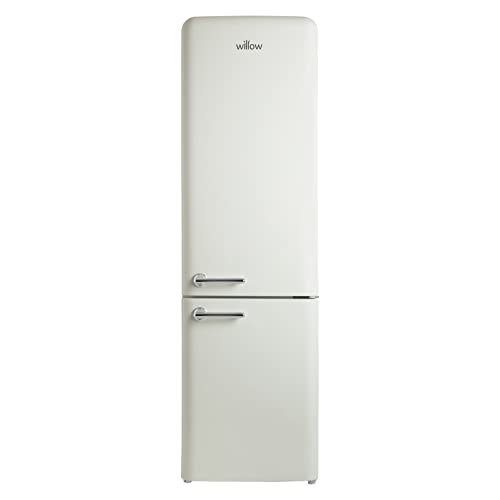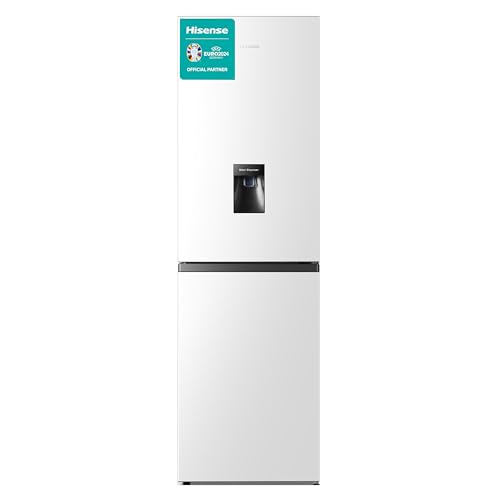This company has no active jobs
0 Review
Rate This Company ( No reviews yet )
Something About Company
How To Choose The Right Fridges And Freezers On The Internet
Understanding Fridges and Freezers: The Essential Kitchen Appliances
Refrigerators and freezers are two of the most important devices in contemporary kitchens. These devices serve an essential role in food conservation and waste decrease by making sure that disposable products stay fresh and safe for consumption. This short article delves into the various types of fridges and freezers, their performances, and crucial factors to consider for choice and maintenance.
Types of Refrigerators
The marketplace offers a range of refrigerator types, each developed to fulfill various consumer needs. Below is a list of the most common kinds of fridges:

-
Top-Freezer Refrigerators
- Most typical type.
- Freezer compartment is located above the refrigerator section.
- Usually more inexpensive and energy-efficient.
-
Bottom-Freezer Refrigerators
- Freezer lies at the bottom.
- Permits simpler access to fresh items at eye level.
- Typically features pull-out drawers for much better company.
-
Side-by-Side Refrigerators
- Refrigerator and freezer sections are nearby.
- Suitable for narrow kitchen areas and enables easy access to both compartments.
- Typically features water and ice dispensers.
-
French Door Refrigerators
- Combines a bottom freezer with double doors at the top.
- Offers ample storage and trendy styles.
- Typically includes features like temperature-controlled drawers.
-
Compact Refrigerators
- Smaller sized size perfect for restricted spaces.
- Frequently utilized in dormitory, small houses, or as secondary fridges.
Table 1: Comparison of Refrigerator Types
| Type | Benefits | Drawbacks | Normal Size |
|---|---|---|---|
| Top-Freezer | Budget-friendly, energy-efficient | Less hassle-free access to the freezer | 14-30 cu. ft. |
| Bottom-Freezer | Simpler access to fresh food | Freezer can be harder to arrange | 19-30 cu. ft. |
| Side-by-Side | Easy gain access to, water/ice dispenser | Narrow vs. storage space | 22-30 cu. ft. |
| French Door | Elegant, roomy, arranged | More expensive | 20-30+ cu. ft. |
| Compact | Space-saving, portable | Limited storage | 1.7-5.5 cu. ft. |
Types of Freezers
Freezers are an equally essential device for food preservation. They come in various designs created to fit different home needs. Think about the list below types:
-
Upright Freezers
- Run like a basic refrigerator with vertical storage.
- Simpler to arrange with shelves and compartments.
-
Chest Freezers
- Big, horizontal style normally offering more storage area.
- Maintains temperature levels better during power interruptions.
- More energy-efficient than upright models.
-
Portable Freezers
- Compact systems perfect for outdoor activities or little spaces.
- Typically utilized for camping trips or as temporary storage.
Table 2: Comparison of Freezer Types
| Type | Advantages | Disadvantages | Normal Size |
|---|---|---|---|
| Upright Freezer | Easier to arrange | Less energy-efficient, more floor area | 5-20 cu. ft. |
| Chest Freezer | Holds more items, energy-efficient | Harder to organize | 5-25 cu. ft. |
| Portable Freezer | Compact and versatile | Restricted storage capacity | 1-10 cu. ft. |
Key Features to Consider
When choosing a fridge or freezer, consumers should remember a number of functions that can improve performance:
- Energy Efficiency: Look for designs with the ENERGY STAR accreditation to minimize electrical energy bills.
- Storage Capacity: Evaluate storage requirements based on household size and consuming habits.
- Temperature Control: Some appliances use digital controls for accurate temperature settings.
- Adjustable Shelving: Customizable shelving permits optimal company.
- Water and Ice Dispenser: Offers benefit but can use up valuable area inside.
- Sound Level: Sound ratings can affect comfort, particularly in open-concept homes.
Advantages and disadvantages of Having a Fridge and Freezer
While fridges and freezers are essential innovations, they likewise have certain benefits and downsides:
| Pros | Cons |
|---|---|
| Protect food lifespan and lower waste | Require regular upkeep |
| Permit bulk purchasing and meal prepping | Can be expensive to acquire and run |
| Offer convenience and fast access to food | Inhabit significant kitchen space |
Upkeep Tips
To ensure longevity and ideal efficiency of fridges and freezers, think about the following maintenance suggestions:
- Regular Cleaning: Clean the exterior and interior regularly to prevent accumulation of dirt and bacteria.
- Inspect Seals: Inspect door seals routinely for leaks to preserve effectiveness.
- Temperature level Settings: Keep the fridge at 34-38 ° F and the freezer at 0 ° F for optimum food preservation.
- Defrost as Needed: Chest freezers ought to be thawed regularly to maintain efficiency.
- Clear Air Vents: Ensure that air flow isn’t blocked to improve energy efficiency.
FAQs About Fridges and Freezers
Q1: How long can food be kept in a freezer?A: Most foods can be kept in a freezer for numerous months. Meats and poultry typically last 4-12 months, while vegetables can last up to 8-12 months.

Q2: How often must I clean my fridge and freezer?A: It is suggested to clean your fridge and freezer every 3 to 6 months, or as required when spills occur. Q3: Can I put hot food straight in the fridge?A: It is suggested to cool hot food to space temperature level before putting it in the fridge to avoid
raising the temperature inside the device. Q4: Why is my fridge running constantly?A: This might be due to a malfunctioning thermostat, stopped up coils, or door seals that aren’t working correctly. Fridges and freezers are invaluable
possessions to modern-day households, supplying essential services for food storage and preservation.
Understanding the numerous types, features, and upkeep requirements can assist consumers choose the best French style fridge freezer uk devices for their requirements and maximize their performance. Accepting energy-efficient designs not just supports sustainable practices but also adds to substantial cost savings on utility costs, making informed choices more important than ever.


